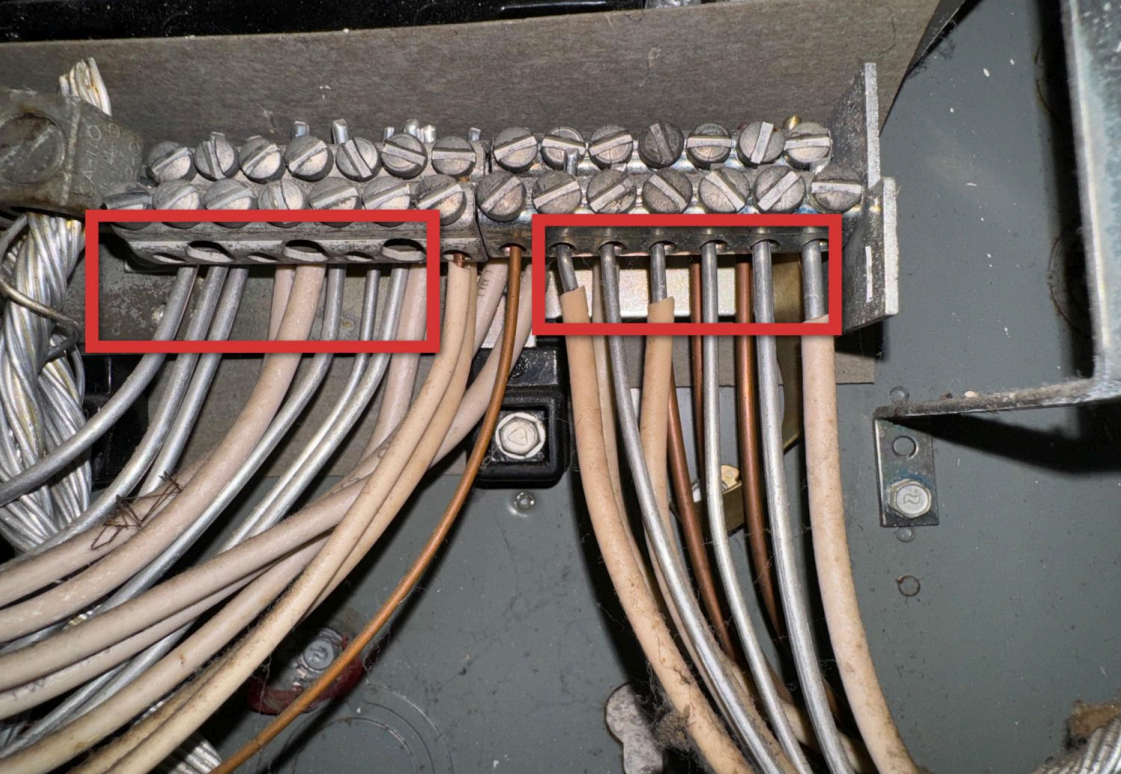

Monday - Friday: 9 am - 8 pm
Saturday: 9 am - 3 pm
Sunday: Closed


Imagine finding your dream home, only to discover the wiring could pose a fire risk.
It’s a reality for homes with solid aluminum strand wiring—a common issue in older homes that many buyers aren’t aware of. Today, we’re breaking down what solid aluminum wiring is, why it’s risky, how to spot it, and the steps you can take to address it in the home-buying process.
If this sounds helpful, subscribe, like, and share for more tips on spotting potential issues before they become costly surprises. Let’s dive in and make sure you’re prepared!
The History of Solid Aluminum Strand Wiring
In the 1960s and early 70s, solid aluminum strand wiring emerged as a cost-effective alternative to copper during a time when copper prices were soaring. Builders considered it a practical choice, much like swapping hardwood floors for laminate. However, as time passed, it became clear that aluminum wiring didn’t perform like copper—and unfortunately, not in a good way.

Expansion and Contraction: A Recipe for Disaster
Aluminum wiring expands and contracts significantly with temperature changes, far more than copper. Over time, this repeated expansion and contraction can loosen the connections, much like overinflating a balloon until it weakens. These loose connections can create sparks, significantly increasing the risk of fire.
Corrosion at Connection Points
Unlike copper, aluminum is prone to oxidation, particularly when it comes into contact with certain metals. This oxidation reduces conductivity and leads to overheating at connection points, creating an additional fire hazard.

Overheating at Switches and Outlets
Electrical outlets and switches serve as the checkpoints of your home’s electrical system. Aluminum wiring at these points often leads to inefficiency, similar to a pipe with a slow leak. The heat build-up from these poor connections can cause significant damage over time.
Don’t Walk Away Just Yet
Finding aluminum wiring in a potential home doesn’t have to be a deal-breaker. Think of it as finding a classic car with a few mechanical issues—repairable and still a worthy investment. Addressing this issue can be part of the buying process rather than a reason to walk away.
Involve a Licensed Electrician
A licensed electrician experienced in aluminum wiring is essential. They’ll evaluate the condition of the wiring, recommend the best course of action, and provide an estimate
for repairs or upgrades.

Consider Safety Upgrades
A popular fix for aluminum wiring is “pigtailing,” which involves connecting short copper wires to the aluminum at critical points using connectors approved by the Consumer Product Safety Commission (CPSC). AlumiConn and COPALUM are two reliable options that ensure safe and permanent connections without requiring a complete rewiring with copper.

Renegotiate the Purchase Price or Request a Credit
The presence of aluminum wiring can serve as a negotiation tool. You can ask the seller to address the wiring issue or provide a credit to cover the cost of necessary upgrades, reducing your out-of-pocket expenses.
Plan for Long-Term Safety
If the seller doesn’t agree to repairs, make upgrading the wiring a priority after purchase. Just like installing a home security system, addressing this issue ensures safety and adds value to your home for future resale.
Solid aluminum strand wiring is a hidden risk that could lead to significant safety concerns. However, understanding its history, recognizing the risks, and knowing how to address it can turn a potential roadblock into a manageable issue. With the right professionals and safety measures, you can confidently move forward with your home purchase.
If you found this guide helpful, share it with other home buyers to help them stay informed. If you need help evaluating your potential dream home, we’re here to ensure you make an informed decision. Contact us today for expert home inspections you can trust!

3218 E Colonial, Suite G
Orlando, FL 32803
servicedesk@proinspectsolutions.com
We proudly serve Orange, Lake, Polk, Osceola, Seminole, and Volusia counties
